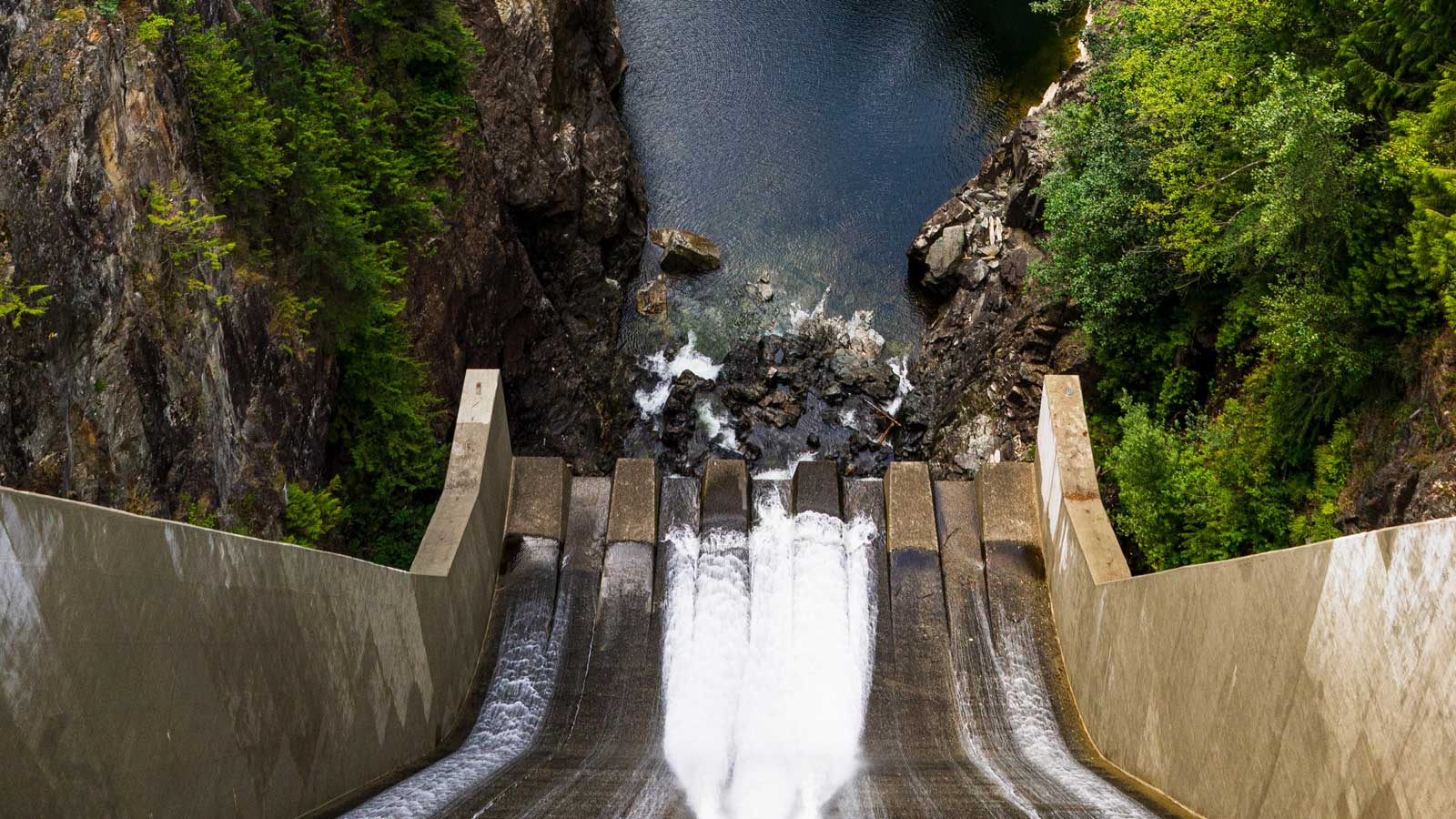
Cleveland Dam
The Cleveland Dam is a 92 m high concrete dam structure, which was built in the late 1950s to store drinking water for the city of Vancouver. The Cleveland Dam is currently operated by the Greater Vancouver Water District (GVWD) and the associated Capilano reservoir currently supplies approximately 40% of Vancouver’s drinking water supply. The creation of the Capilano reservoir has resulted in high gradients in the Lower Aquifer (downstream of the dam) and has created concerns about soil losses in a vertical dewatering shaft.
In 2001, EBA Engineering Ltd. (Vancouver) was retained by the Greater Vancouver Water District to assess the potential for soil losses from the Lower Aquifer. One of the aspects of this study was to develop and calibrate a groundwater flow model to assess hydraulic gradients near the Shaft and to assess alternative depressurization systems (vertical wells, horizontal drains etc). A comprehensive pump test (involving monitoring of 20+ monitoring wells over a period of two months was carried out to assist in calibration of this model.
RGC assisted EBA in the conceptualization of the groundwater flow system and development of a groundwater flow model for the site to evaluate alternative depressurization strategies. RGC was responsible for the development and calibration of the groundwater flow model (FEFLOW) using the pump tests data.
Services Provided
- Development of a groundwater flow model for the Lower Aquifer (LAQ) at the Cleveland Dam
- Model construction using FEFLOW
- Model calibration using pump test data
- Simulation of depressurization options for LAQ
Clients
EBA Engineering Consultants Ltd.
